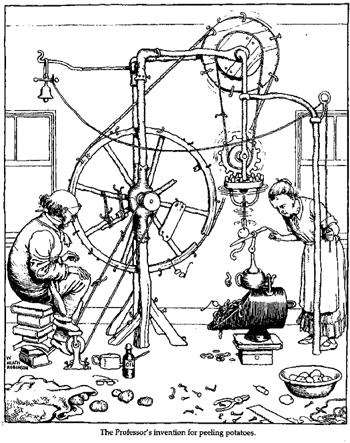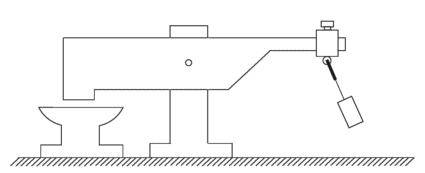misinformation propaganda
Your logic is bastardized - you and a handful of others have said the video isn't clear enough to tell what is going on - therefore, you still have no idea what the elephant looks like. Your above bolded quote proves my point. Yet, with your analogy you claim to know what the elephant looks like. 
It is clear to me and a few others and that red filtered video clearly shows 100% exactly what I described. The height of the rod shortens as it gets to the end of the left side and starts to go right because it is tipped away from the camera meaning it would appear slightly shorter on its way back to the right - 100% exactly as depicted in the diagram I posted.
Also, your circular claims falls flat and is inconsistent with how the translation plate operates - you are doing nothing more than pushing your theories while I actually have had the mechanism worked out in an actual model for over 1.5 years. You can talk all you want but until you build something, you don't know what does what. I'm speaking from experience while you are not. I am not operating on educated guesses, while you think you are - I am giving explanations based on successful demonstrates of the mechanism and I know what method gives the highest advantage as I have measured them all.
Everything I have explained accounts for the gains in the machine, while your claims actually negate the entire point of the machine. So, what is your point? You can't get the gains with a circular mechanism and if that is what you believe it is, you're wasting your time and everyone else's because it contradicts the claims of the machine.
Originally posted by purelyprimitives
View Post

It is clear to me and a few others and that red filtered video clearly shows 100% exactly what I described. The height of the rod shortens as it gets to the end of the left side and starts to go right because it is tipped away from the camera meaning it would appear slightly shorter on its way back to the right - 100% exactly as depicted in the diagram I posted.
Also, your circular claims falls flat and is inconsistent with how the translation plate operates - you are doing nothing more than pushing your theories while I actually have had the mechanism worked out in an actual model for over 1.5 years. You can talk all you want but until you build something, you don't know what does what. I'm speaking from experience while you are not. I am not operating on educated guesses, while you think you are - I am giving explanations based on successful demonstrates of the mechanism and I know what method gives the highest advantage as I have measured them all.
Everything I have explained accounts for the gains in the machine, while your claims actually negate the entire point of the machine. So, what is your point? You can't get the gains with a circular mechanism and if that is what you believe it is, you're wasting your time and everyone else's because it contradicts the claims of the machine.






Comment